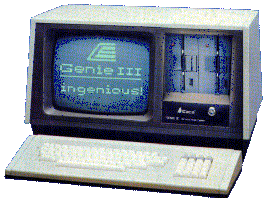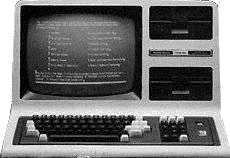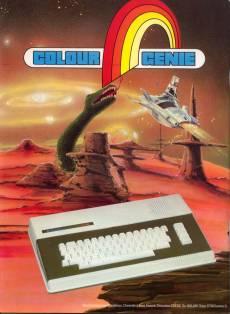 | EACA History |
|
Eric Chung moved from China to Hong Kong and by 1978 had established EACA International Limited. EACA was a small manufacturer producing television games and other electronic gadgets. Around the middle of 1980 EACA moved into the emerging home computer market with the Genie I, also known as the Video Genie, System 80 or PMC-80 in some countries. EACA tended to sell through exclusive dealerships in each territory, e.g. in the United Kingdom the Video Genie was sold through Lowe Electronics, and sometimes the computer was badged under the local dealer's name rather than the (unfamiliar) EACA name. Whatever the name on the case, the Genie Mark I was effectively a clone of the already-successful Tandy TRS-80 model I, but had some advantages over the Tandy machine to tempt buyers. The Genie came with a cassette deck for storing programs built into the console whereas a cassette recorder was an external extra for the Tandy, and the Genie had a better keyboard than early TRS-80s. Both computers sold for around £300 in the UK so the Genie, with its included extras, represented better value for money. April 1981 saw the release of the Genie II, alongside rather than as a replacement for the Genie I. The Mark II used the same case and mostly the same internal design as the Mark I but was intended for the business market and had a numeric keypad in place of the integrated cassette deck. Floppy disk drives could be attached via an external expansion box and a computer monitor display rather than a domestic television was required.
For their previous models EACA had produced computers compatible with established and better-selling competitors, ensuring there was already a software base for them. Whilst the legality of such 'clones' was debatable, EACA were correct to see that software availability was a major selling point for a new computer, as became clear a few years later with clones of the IBM PC. It is therefore strange that they went their own way with the Colour Genie. The home computer boom between 1982 and 1984 may have been an exciting time for the users but it put manufacturers under great pressure. Prices had to be cut to attract sales but inevitably margins fell and companies found it very difficult to make a profit. EACA was not immune to these problems. In 1983 EACA International imploded. Eric Chung had tried, unsuccessfully, being a speculator in the Hong Kong property market and had lost a lot of money, plus EACA's non-computer product range (e.g. radios) had not been profitable. EACA had huge debts and Eric Chung disappeared, according to some reports with a suitcase containing $10 million in cash. |
 The next EACA machine, the Genie III of July 1982 (right), with a price tag of around £2000, was aimed even more clearly at business users. The Mark III featured a main unit holding the monitor and two floppy disk drives, and a separate keyboard. It was capable of running the CP/M operating system and thus there was a wide range of software already available for it, but even so it did not sell well, probably because EACA was still a small company and could not afford to really promote the machine and make it stand out from its numerous competitors.
The next EACA machine, the Genie III of July 1982 (right), with a price tag of around £2000, was aimed even more clearly at business users. The Mark III featured a main unit holding the monitor and two floppy disk drives, and a separate keyboard. It was capable of running the CP/M operating system and thus there was a wide range of software already available for it, but even so it did not sell well, probably because EACA was still a small company and could not afford to really promote the machine and make it stand out from its numerous competitors. Hardware-wise the Genie III was still very similar to the original Genie I, with a Z80A microprocessor, monochrome display and no high resolution graphics as standard. It also bore a close resemblance to the Tandy TRS-80 Model 4 (left), with which it was largely compatible.
Hardware-wise the Genie III was still very similar to the original Genie I, with a Z80A microprocessor, monochrome display and no high resolution graphics as standard. It also bore a close resemblance to the Tandy TRS-80 Model 4 (left), with which it was largely compatible. EACA launched its last computer in August 1982, this being the
EACA launched its last computer in August 1982, this being the